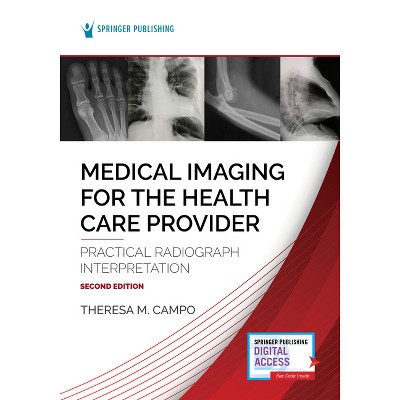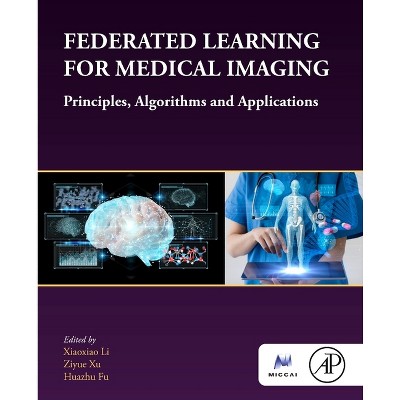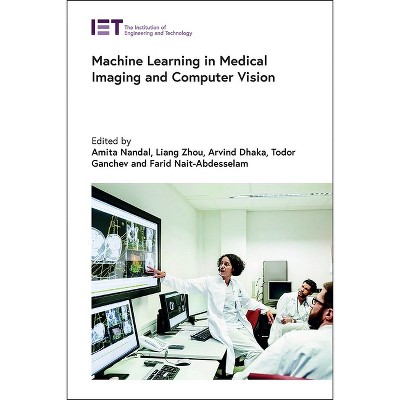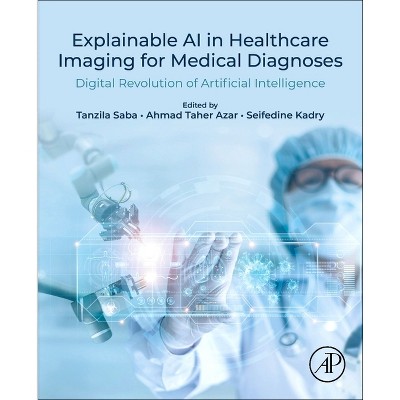Sponsored

Medical Imaging - by Harry Levine (Hardcover)
In Stock
Sponsored
About this item
Highlights
- A prize-winning medical writer offers an explanation of modern diagnostic medical imaging technologies--and the issues that result from their use and misuse.
- About the Author: Harry LeVine, III, PhD, is associate professor in the Sanders-Brown Center on Aging and the Department of Molecular and Cellular Biochemistry at the University of Kentucky, Lexington, KY.
- 224 Pages
- Medical, Diagnostic Imaging
Description
About the Book
A prize-winning medical writer offers an explanation of modern diagnostic medical imaging technologies--and the issues that result from their use and misuse.
Medical Imaging describes the discovery and development of diagnostic imaging technologies, explaining how the technologies work and exploring some of the issues that such powerful and expensive technologies create. The book begins with the discovery of X-rays in 1895 and traces the history of imaging technology through today's tools, such as X-ray computed tomography, magnetic resonance imaging (MRI), functional imaging by positron emission tomography (PET), and single photon emission computed tomography (SPECT).
The contribution of these expensive technologies to the rising cost of healthcare in the United States and the unequal distribution of imaging diagnostic facilities, particularly in developing countries, is also considered. In addition, the book explores ethical questions that have surfaced in the past, including the reportability of incidental findings during a scan and admissibility of medical images as evidence in courts of law, and such newly emerging issues as the application of imaging tools in lie detection and the mammography guidelines controversy of 2009.
- Various charts and illustrations show medical imaging modalities, Medicare medical imaging costs, distribution of imaging costs, physicians' fees by modality, nuclear imaging probes, and medical imaging physics
- A glossary defines key terms necessary to understanding medical imaging technology such as "positron," "half-life," and "tomography," as well as acronyms such as "MRI,", "PET," "SPECT," and "CT"
- Presents documents including early popular science articles on X-ray technology and its abuse
Book Synopsis
A prize-winning medical writer offers an explanation of modern diagnostic medical imaging technologies--and the issues that result from their use and misuse.
Medical Imaging describes the discovery and development of diagnostic imaging technologies, explaining how the technologies work and exploring some of the issues that such powerful and expensive technologies create. The book begins with the discovery of X-rays in 1895 and traces the history of imaging technology through today's tools, such as X-ray computed tomography, magnetic resonance imaging (MRI), functional imaging by positron emission tomography (PET), and single photon emission computed tomography (SPECT). The contribution of these expensive technologies to the rising cost of healthcare in the United States and the unequal distribution of imaging diagnostic facilities, particularly in developing countries, is also considered. In addition, the book explores ethical questions that have surfaced in the past, including the reportability of incidental findings during a scan and admissibility of medical images as evidence in courts of law, and such newly emerging issues as the application of imaging tools in lie detection and the mammography guidelines controversy of 2009.Review Quotes
"In the two major sections, Le Vine (Univ. of Kentucky in Lexington) offers a fascinating history of the various forms of medical imaging and the current controversies surrounding their uses. He describes the most current technologies in sufficient detail so that readers obtain the requisite knowledge base. The second section is the gem. Against a background of today's rising health care costs and the misinformation provided on the Internet, the author clarifies many of the urban legends surrounding imaging technologies. The final section provides a highly current and comprehensive set of references and resources. Charts, illustrations, and a glossary are included. Summing Up: Highly recommended. General audience, health care students, and perhaps entry-level health care practitioners." --Choice
About the Author
Harry LeVine, III, PhD, is associate professor in the Sanders-Brown Center on Aging and the Department of Molecular and Cellular Biochemistry at the University of Kentucky, Lexington, KY.Shipping details
Return details
Frequently bought together
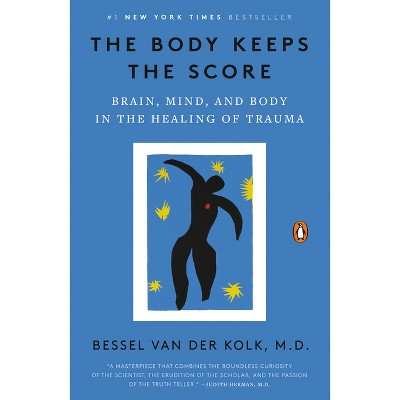

Guests also viewed










